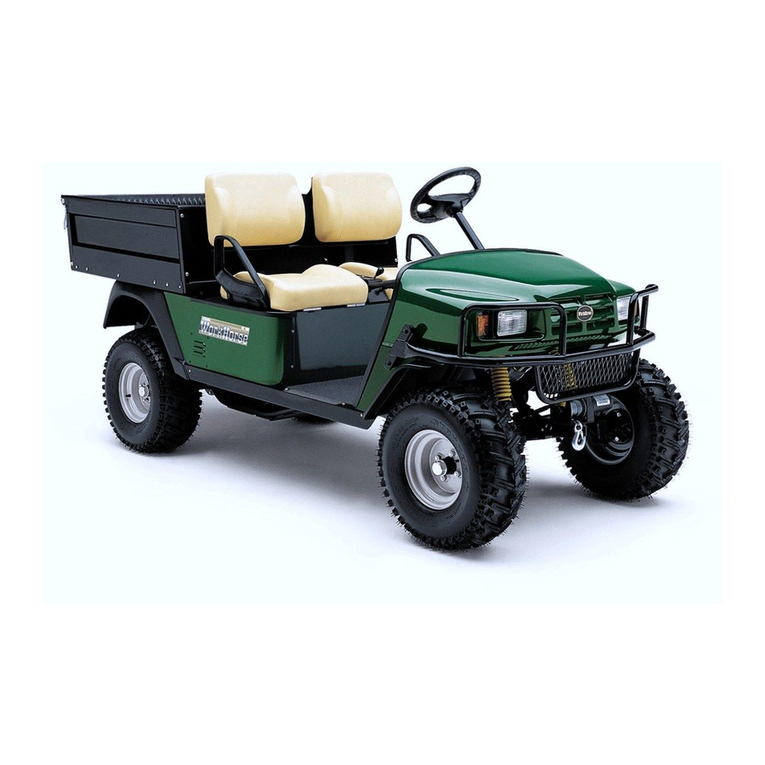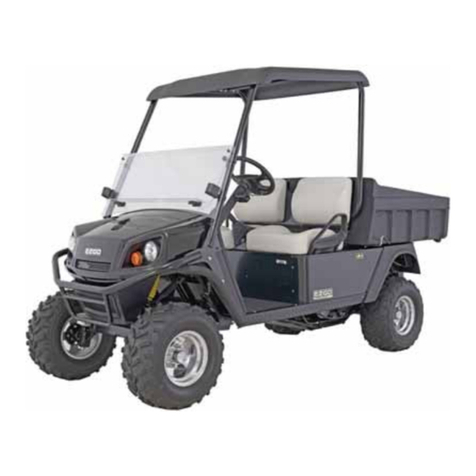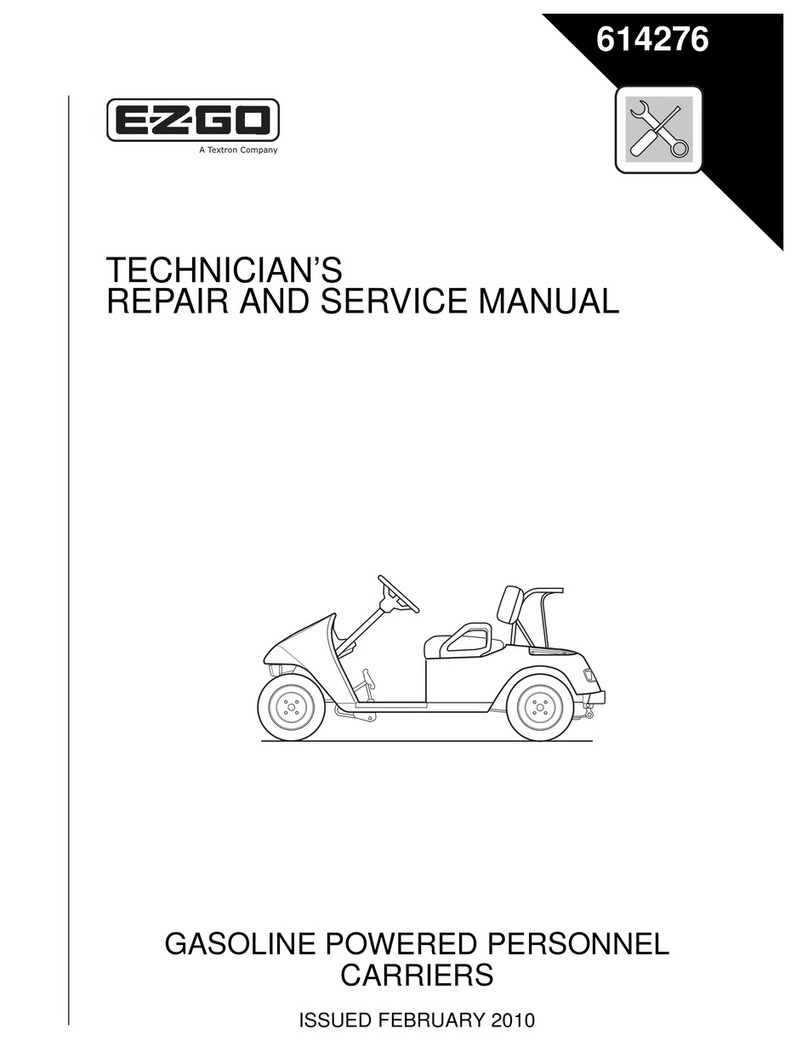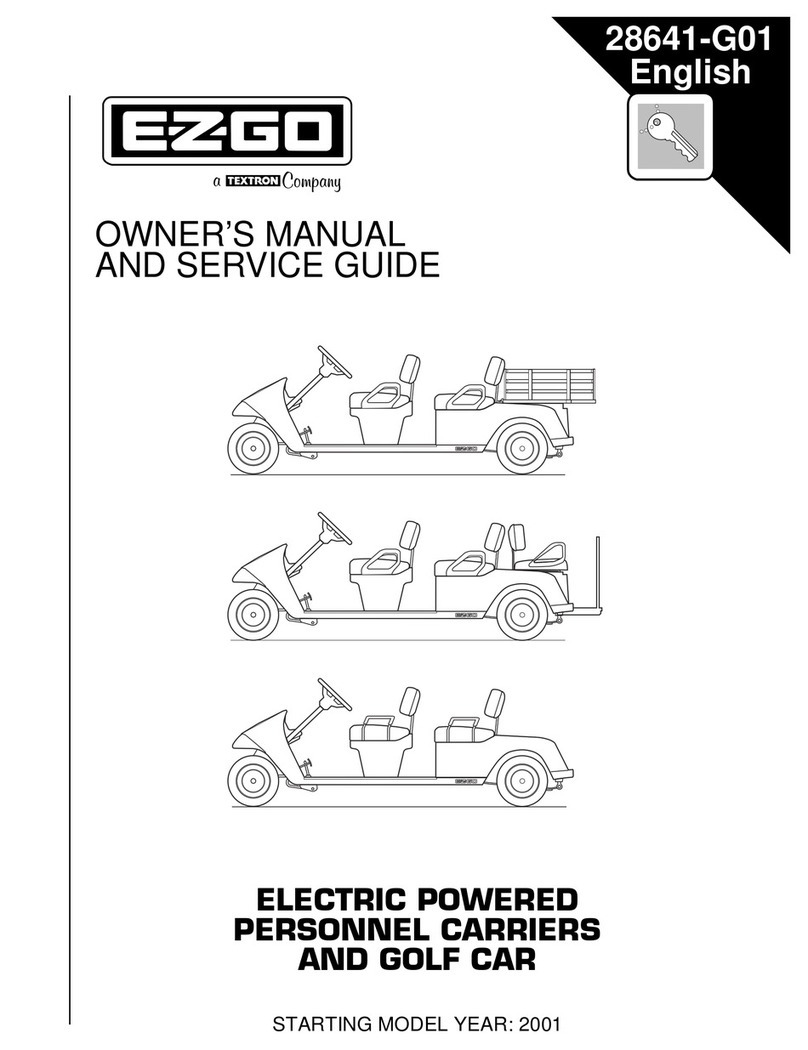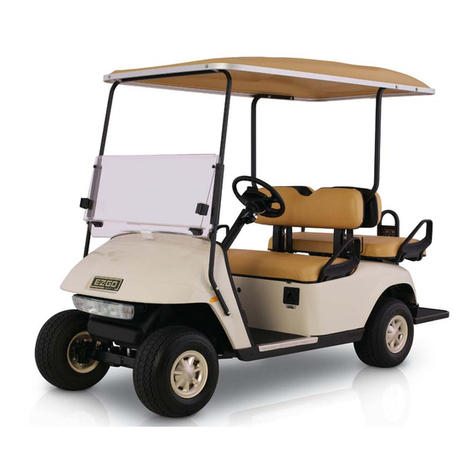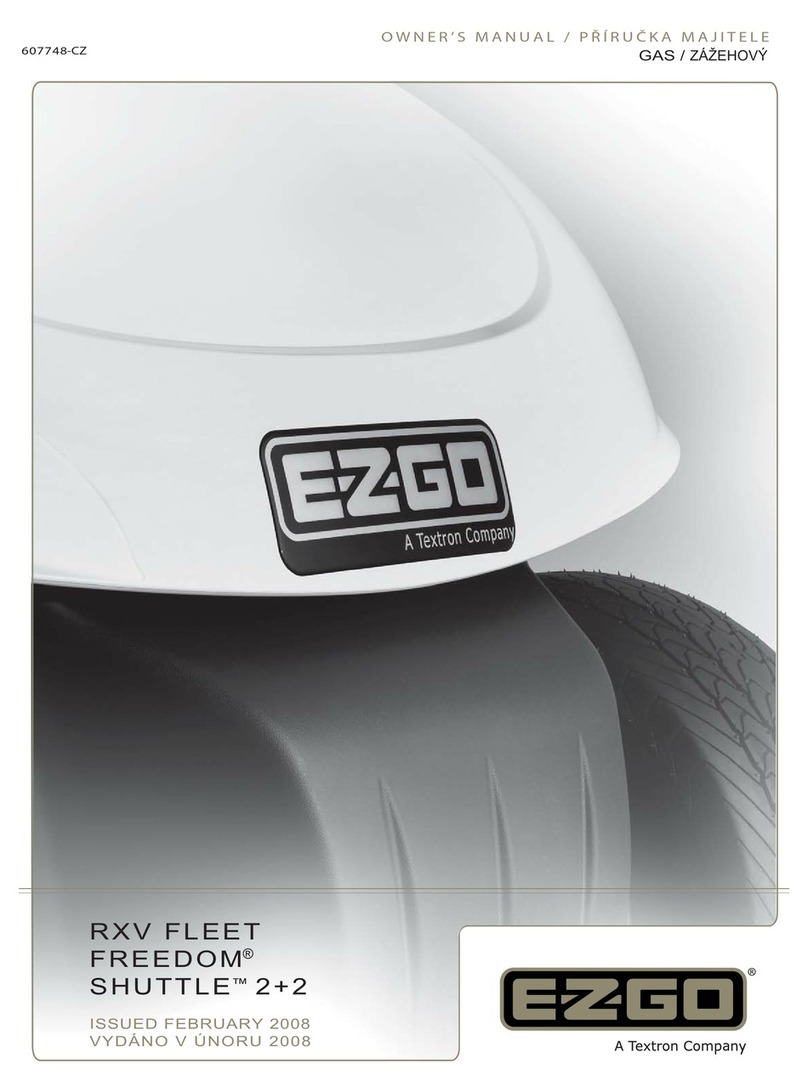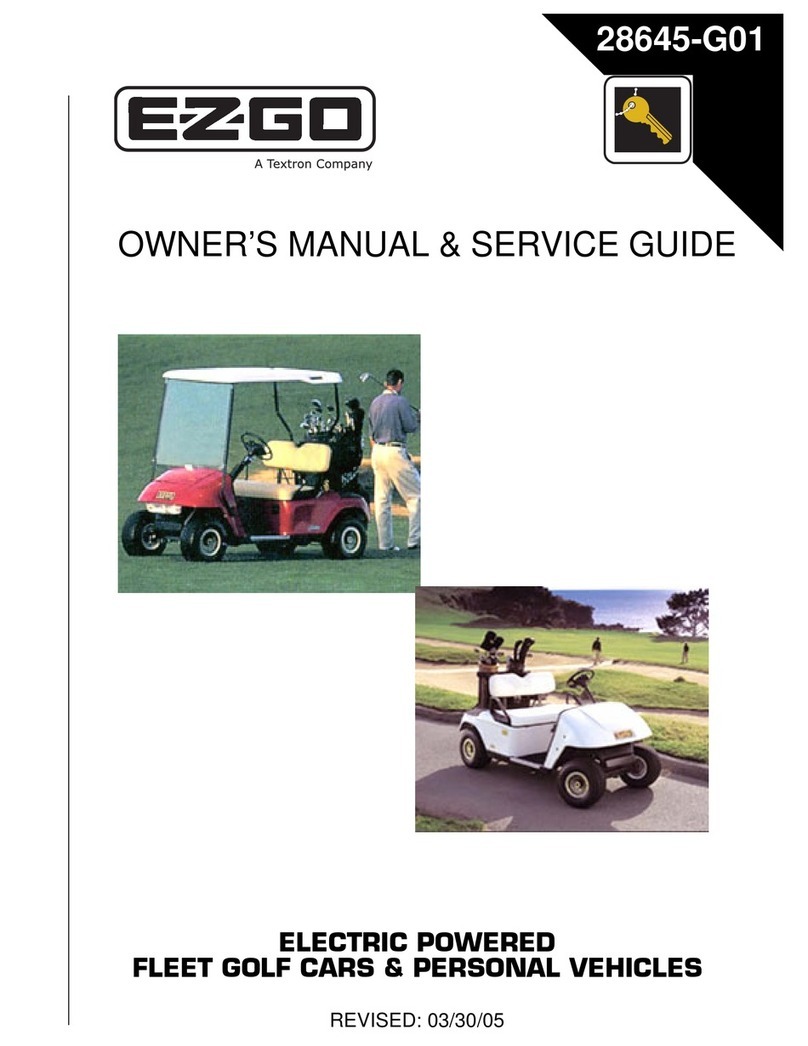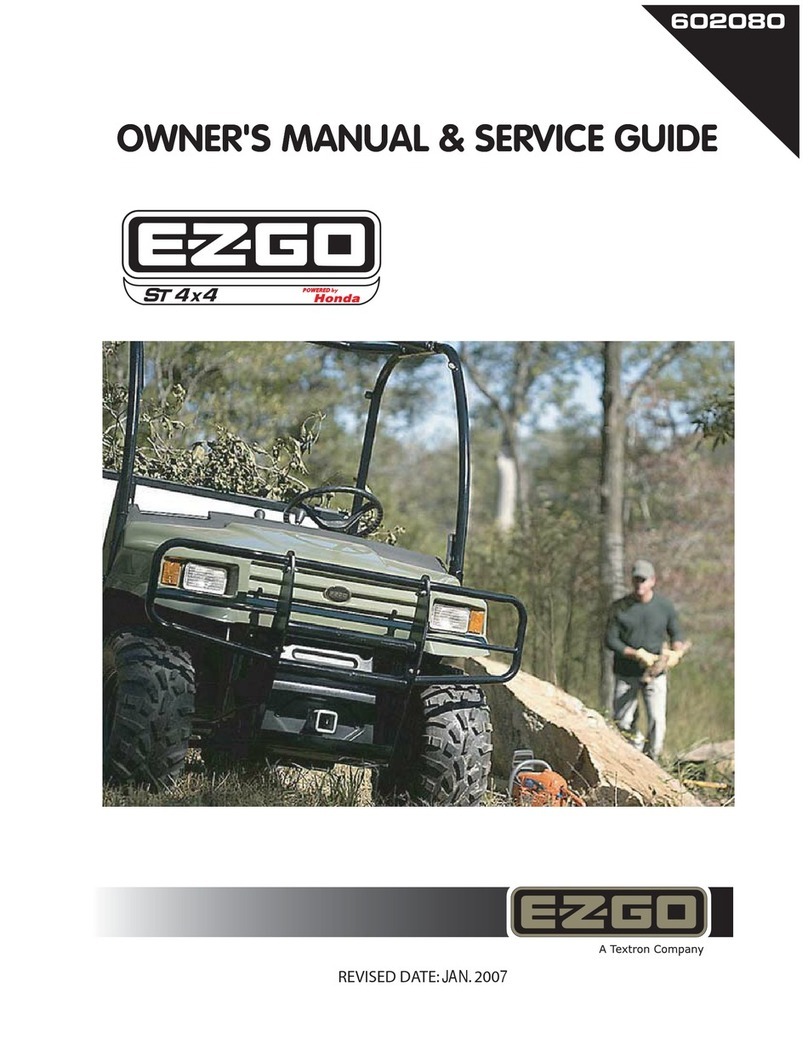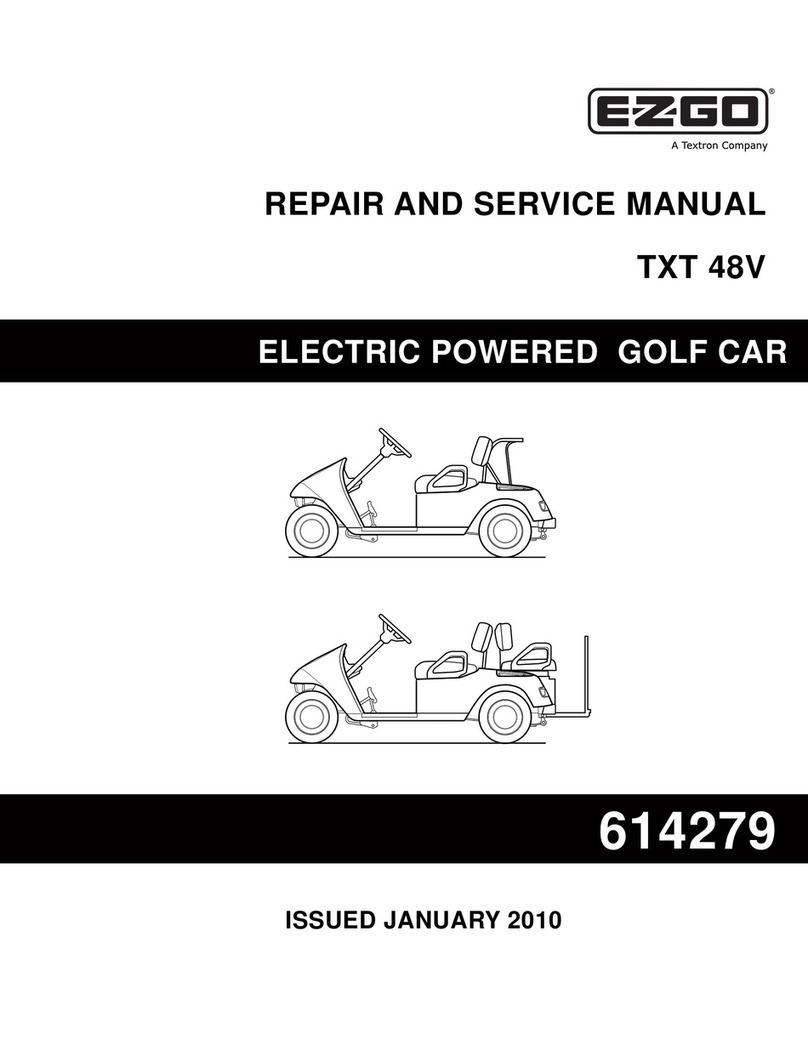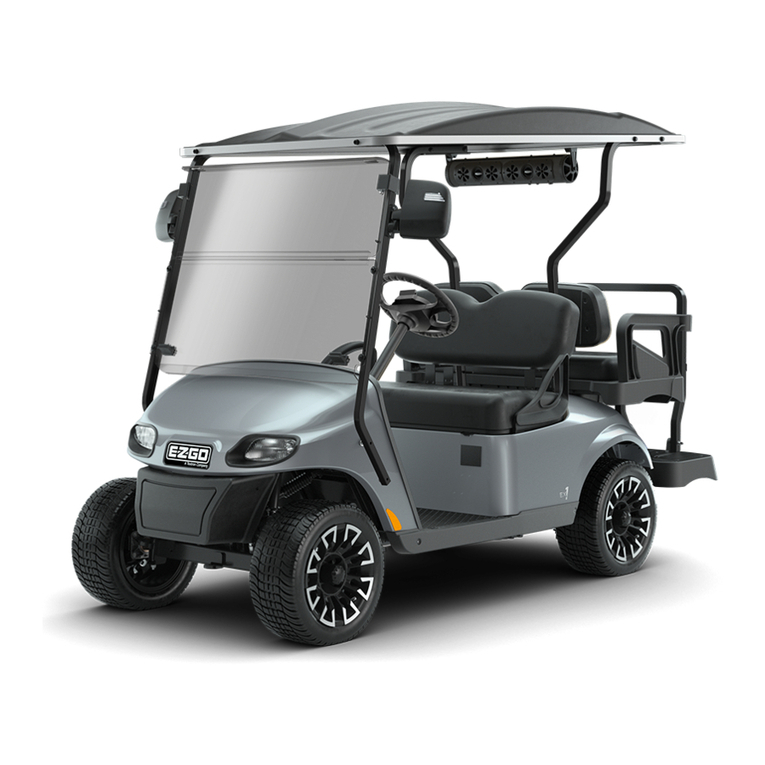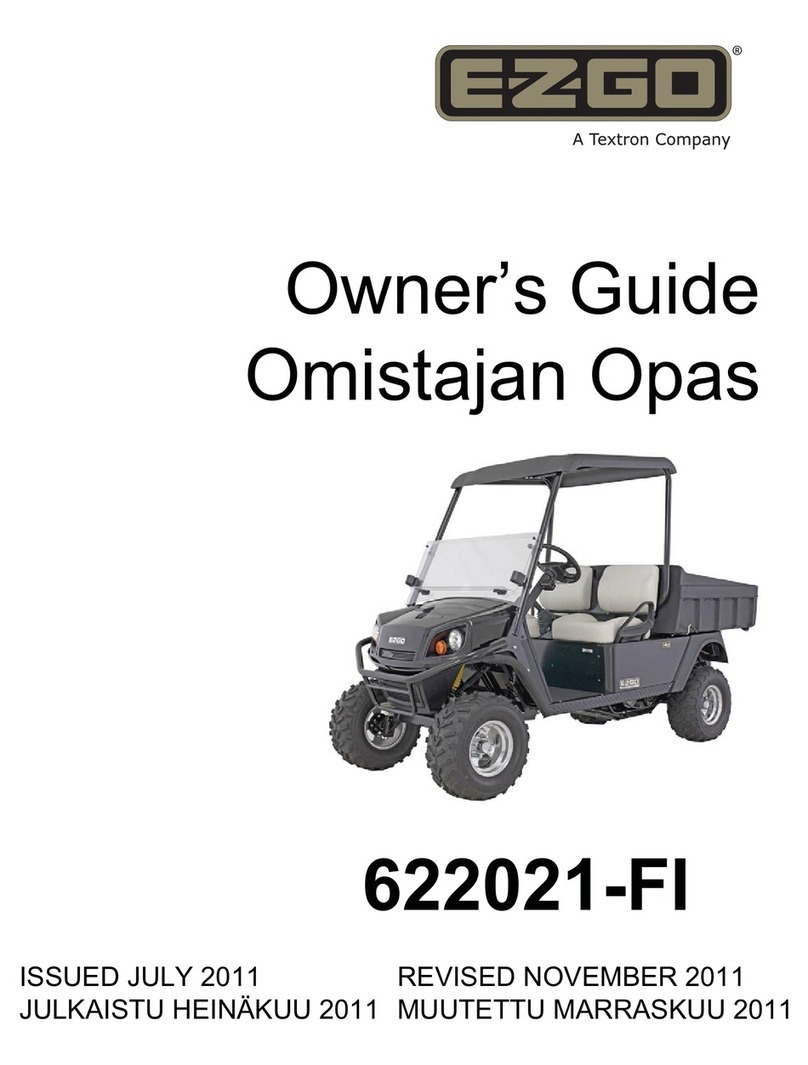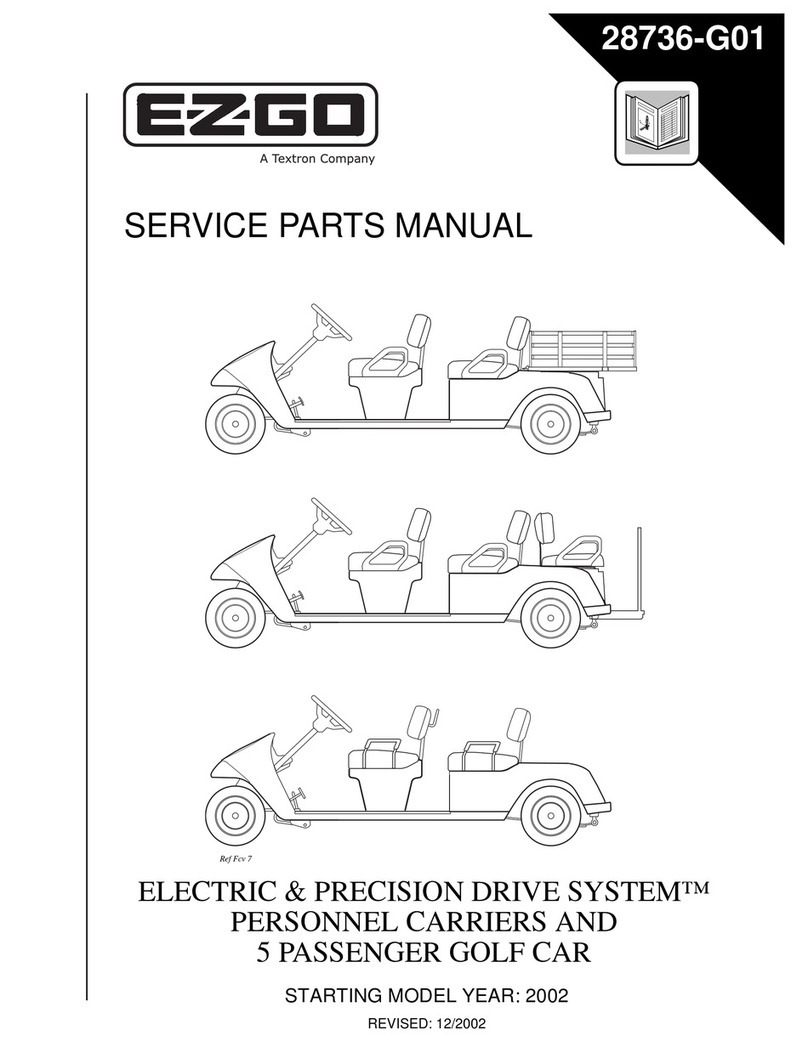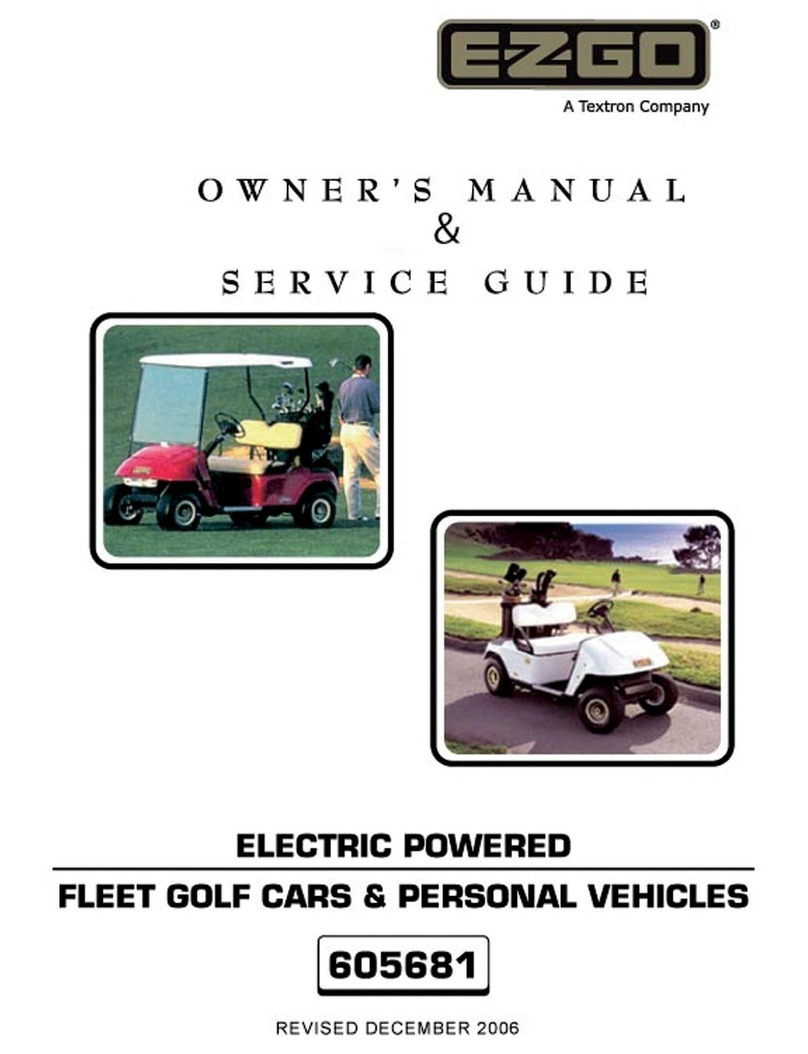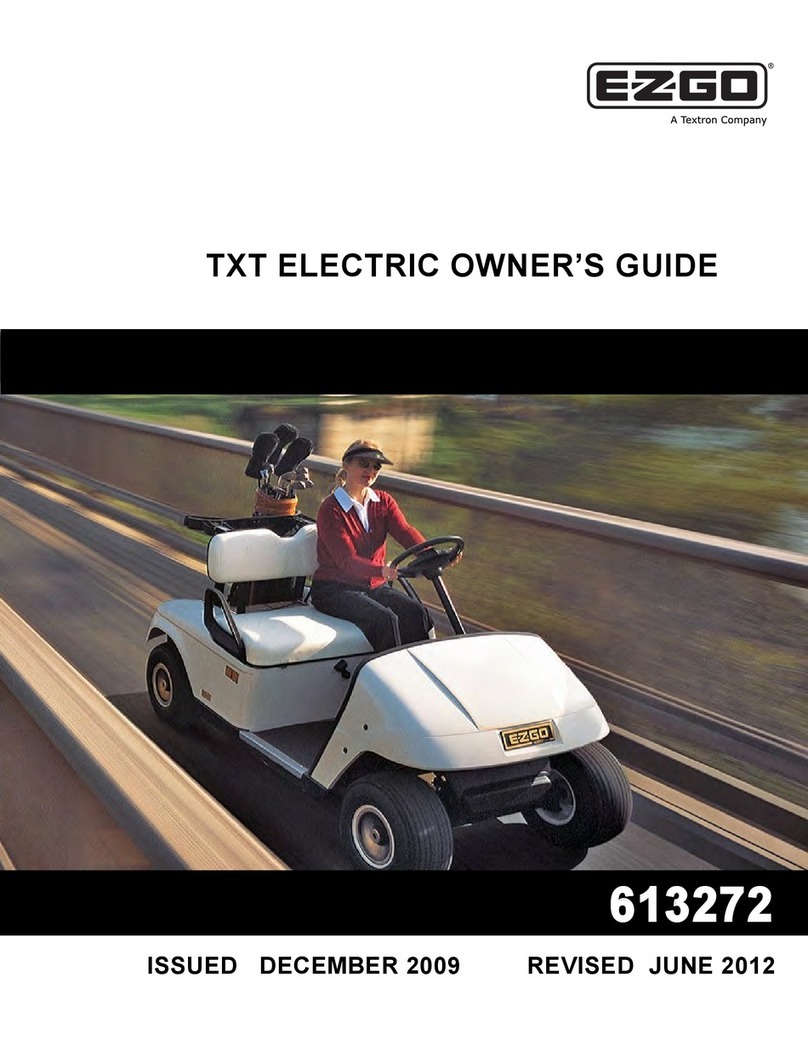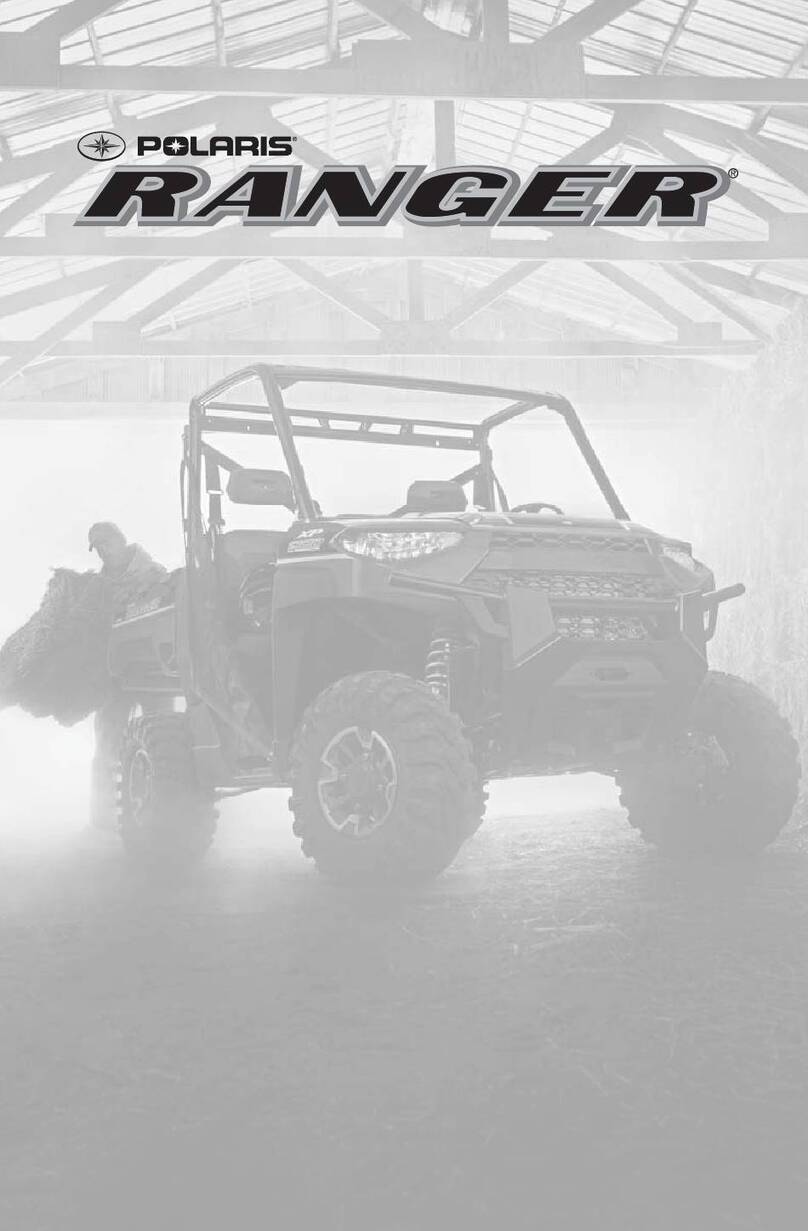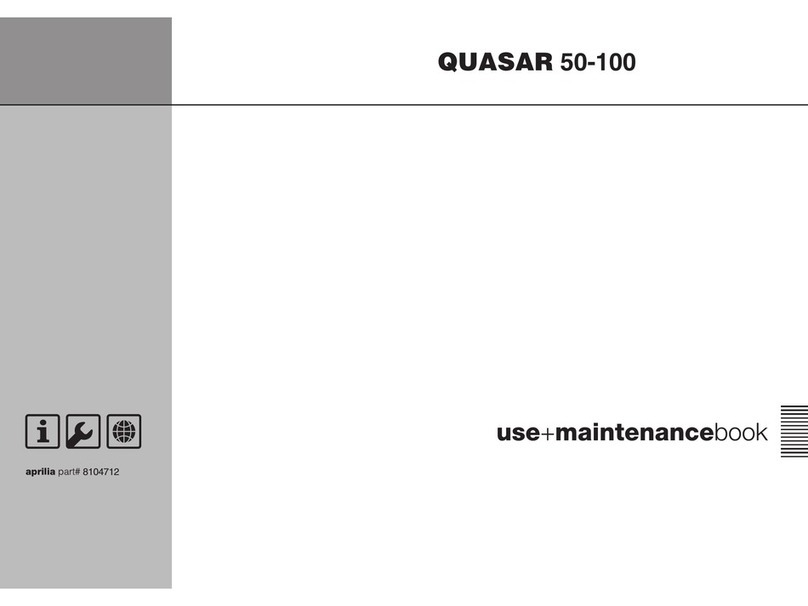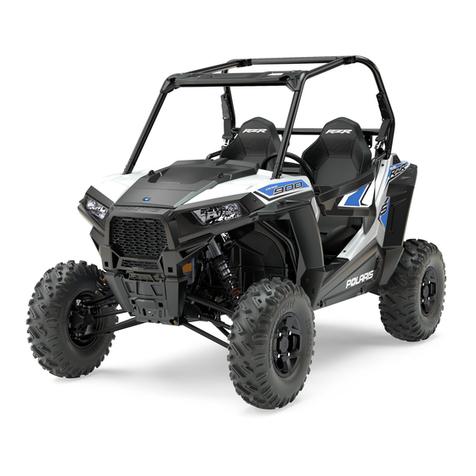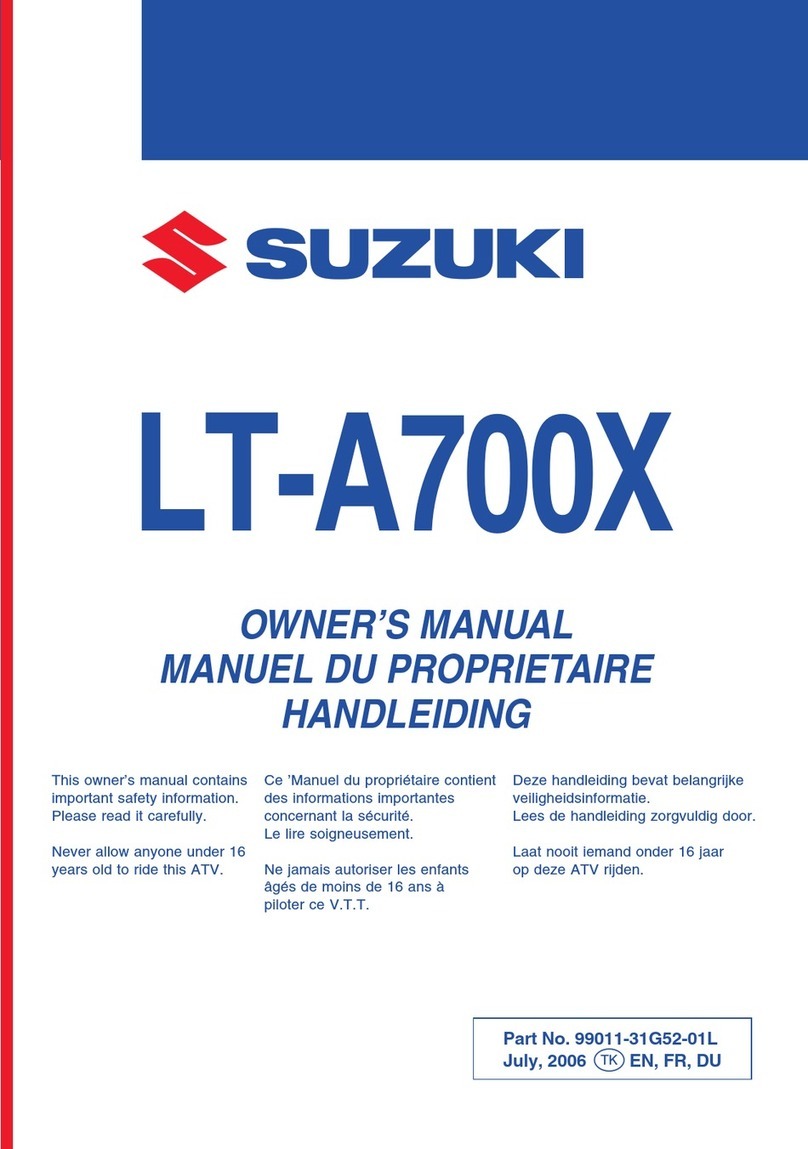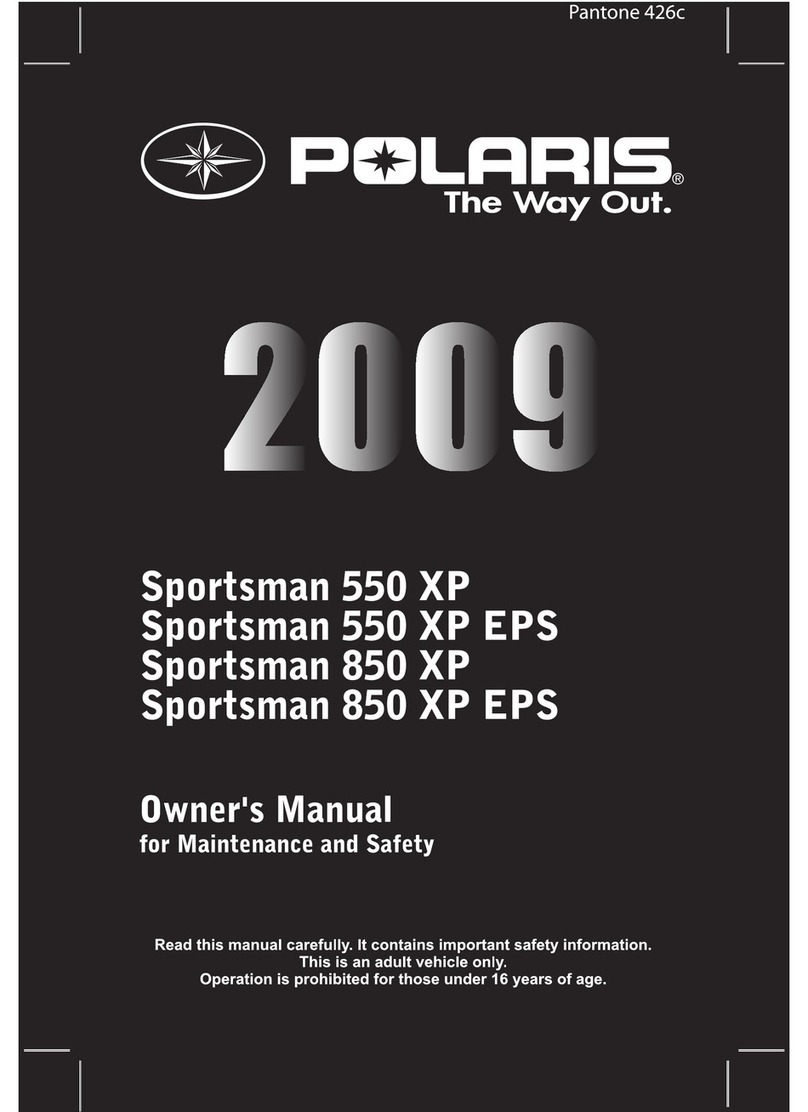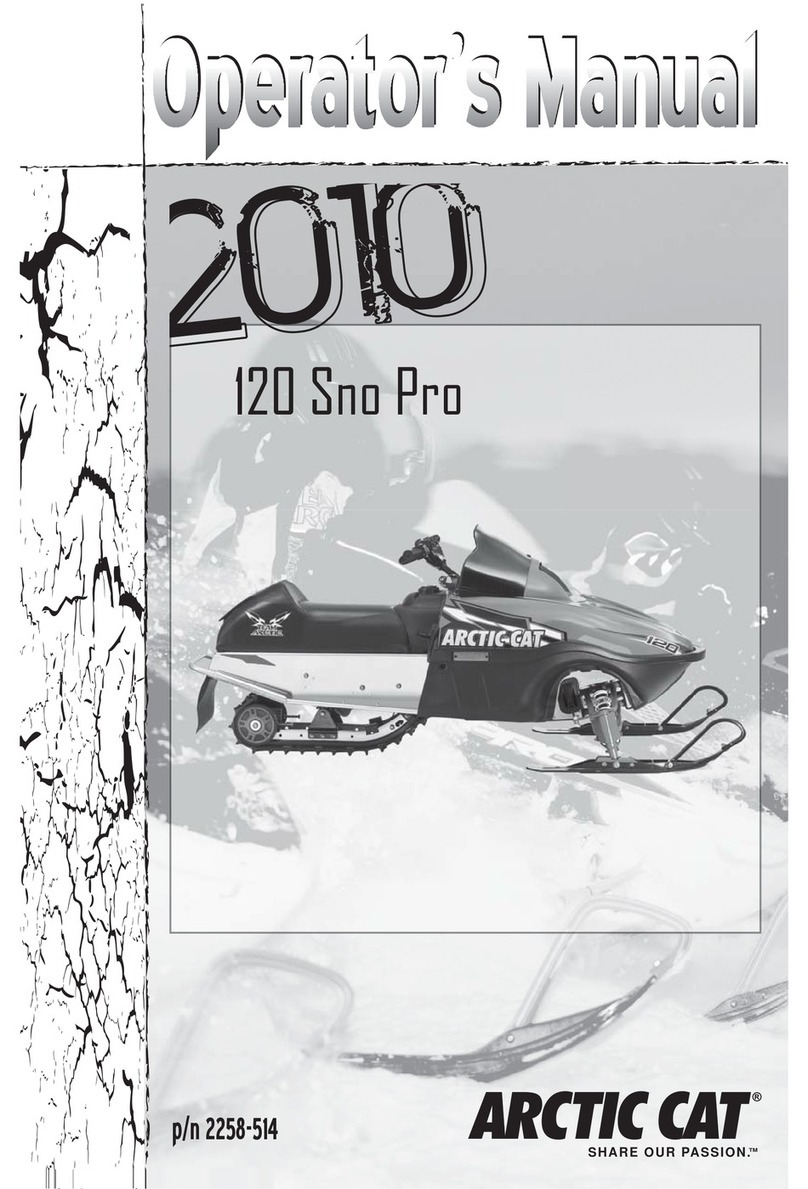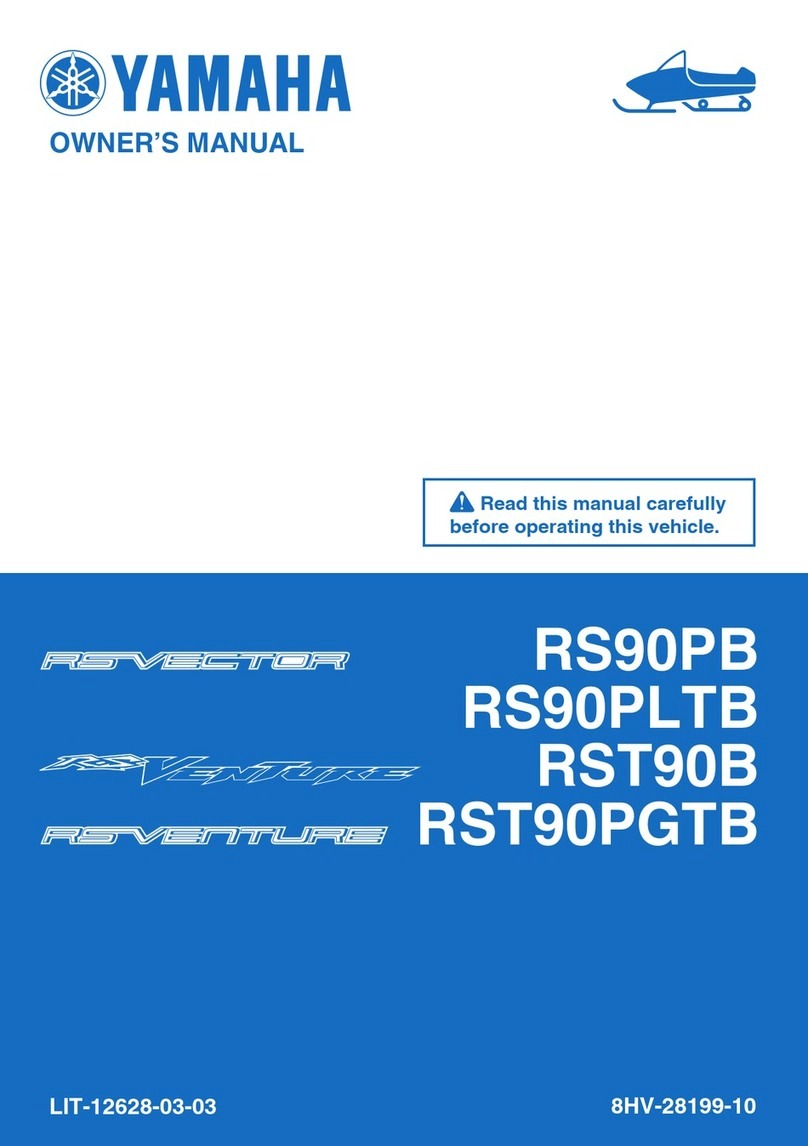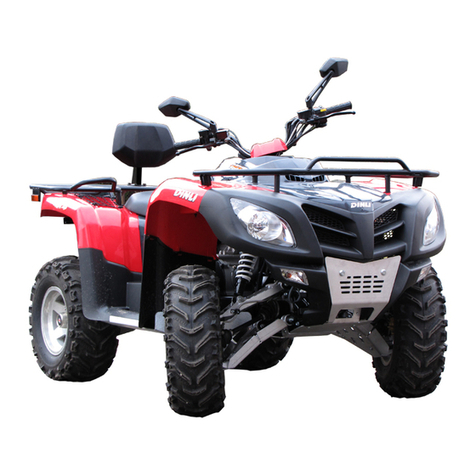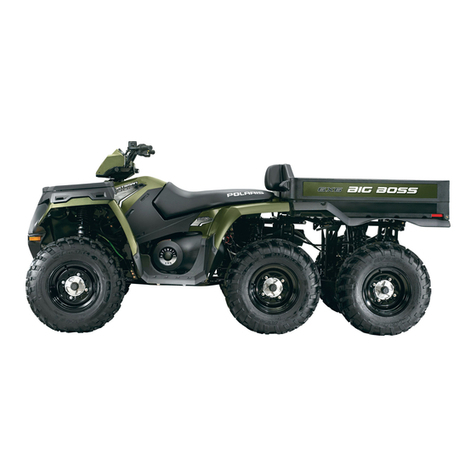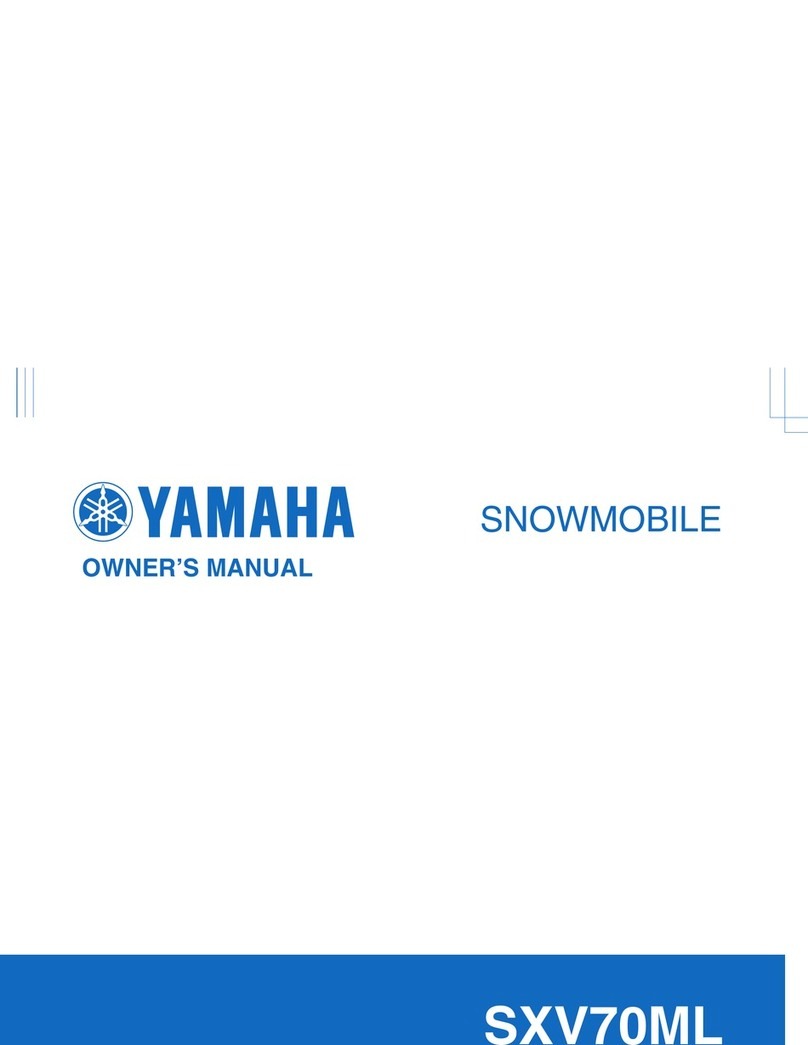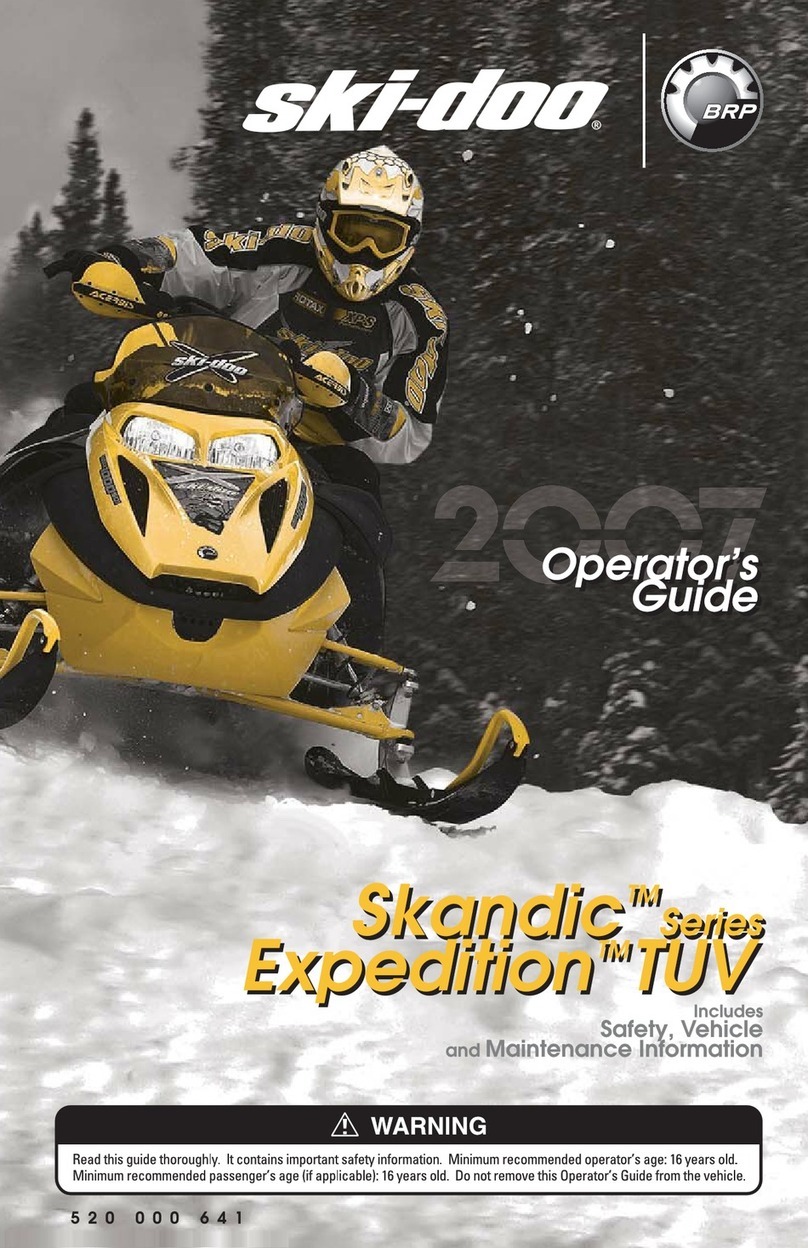
SAFETY INFORMATION
Page v
Repair and Service Manual
Read all of manual to become thoroughly familiar with this vehicle. Pay particular attention to all Notices, Cautions and Warnings
This manual has been designed to assist the owner-operator in maintaining the vehicle in accordance with proce-
dures developed by the manufacturer. Adherence to these procedures and troubleshooting tips will ensure the best
possible service from the product. To reduce the chance of personal injury and/or property damage, the following
instructions must be carefully observed:
GENERAL
Many vehicles are used for a variety of tasks beyond the original intended use of the vehicle; therefore it is impossible
to anticipate and warn against every possible combination of circumstances that may occur. No warnings can take
the place of good common sense and prudent driving practices.
Good common sense and prudent driving practices do more to prevent accidents and injury than all of the warnings
and instructions combined. The manufacturer strongly suggests that the owner-operator read this entire manual pay-
ing particular attention to the CAUTIONS and WARNINGS contained therein. It is further recommended that employ-
ees and other operators be encouraged to do the same.
If you have any questions, contact your closest representative or write to the address on the back cover of this publi-
cation, Attention: Customer Care Department.
E-Z-GO Division of Textron reserves the right to make design changes without obligation to make these changes on
units previously sold and the information contained in this manual is subject to change without notice.
E-Z-GO Division of Textron is not liable for errors in this manual or for incidental or consequential damages that result
from the use of the material in this manual.
This vehicle conforms to the current applicable standard for safety and performance requirements.
These vehicles are designed and manufactured for off-road use. They do not conform to Federal Motor Vehicle
Safety Standards and are not equipped for operation on public streets. Some communities may permit these vehicles
to be operated on their streets on a limited basis and in accordance with local ordinances.
With electric powered vehicles, be sure that all electrical accessories are grounded directly to the battery (-) post.
Never use the chassis or body as a ground connection.
Refer to GENERAL SPECIFICATIONS for vehicle seating capacity.
Never modify the vehicle in any way that will alter the weight distribution of the vehicle, decrease its stability
or increase the speed beyond the factory specification. Such modifications can cause serious personal
injury or death. Modifications that increase the speed and/or weight of the vehicle will extend the stopping distance
and may reduce the stability of the vehicle. Do not make any such modifications or changes. The manufacturer pro-
hibits and disclaims responsibility for any such modifications or any other alteration which would adversely affect the
safety of the vehicle.
Vehicles that are capable of higher speeds must limit their speed to no more than the speed of other vehicles when
used in a golf course environment. Additionally, speed should be further moderated by the environmental conditions,
terrain and common sense.
GENERAL OPERATION
Always use the vehicle in a responsible manner and maintain the vehicle in safe operating condition.
Always read and observe all warnings and operation instruction labels affixed to the vehicle.
Always follow all safety rules established in the area where the vehicle is being operated.
